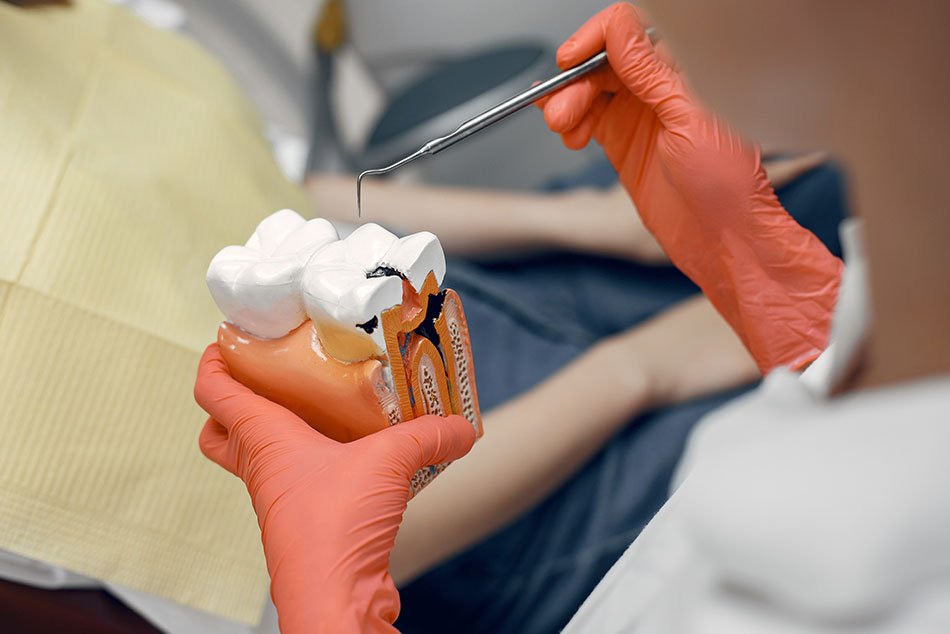Tooth decay or Dental caries or a cavity of tooth, has been one of the most prevalent diseases to affect mankind since times immemorial.Even today the prevalence is almost universal across geographies and ages.
Tooth decay is the process that results in a cavity (dental caries). It occurs when bacteria in your mouth make acids that eat away at a tooth. Hence, it is an infection, bacterial in origin, that causes demineralization and destruction of the hard structures/tissues of the teeth (enamel, dentin and cementum). It is a result of the production of acid by bacterialfermentation of food debris accumulated on the tooth surface.If demineralizationexceeds saliva and other remineralization factors such as from calcium andfluoridated toothpastes, these once hard tissues progressively break down, producing dental caries (cavities, holes in the teeth).

There are over 500 different types of bacteria that are normally present in the mouth. These bacteria combine with food and saliva to form a sticky substance called plaque that attaches to teeth. Foods rich in starches add to the stickiness of the plaque. As you already know, bacteria in the plaque convert sugar into acid that dissolves the tooth structure causing holes, or cavities. Because of these two contributing factors, dental caries have been described as a “dietobacterial” disease
If not treated, tooth decay can cause pain,swelling,pus formation(abscess), and tooth loss. You can easily prevent tooth decay by brushing and flossing your teeth regularly, seeing your dentist for teeth cleaning and checkups, and avoiding foods that are high in sugar. A person experiencing caries may not be aware of the disease.






